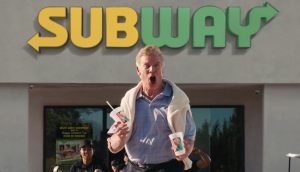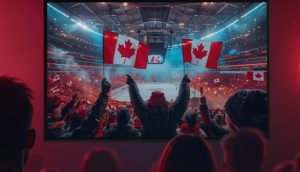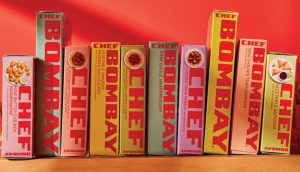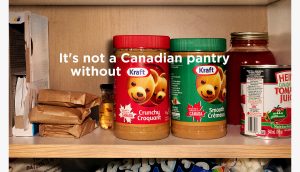With almost $100,000 ponied up by Canadian advertisers for ads on Global, and an astronomical price tag in the States of US $2.6 million per 30-second spot, there was a lot riding on this year’s game for a lot of hopeful marketers. The number of Canadian viewers was not available at press time (some 3.9 Canadians watched Super Bowl 2006), but in the U.S. there was reportedly 90 million. For Super Bowl 2007, says MiC‘s panel of industry pro’s, the superb quality demanded by the event mostly wasn’t on view.
Posting spots online before the game is a good strategy – Nick Barbuto, director interactive, Cossette, Toronto:
To extend the reach of these highly produced, very expensive commercials by posting them online is a great strategy for reaching people like me, who aren’t necessarily going to watch the Super Bowl itself. A great example was the Kevin Federline commercial for Nationwide. Even before the game, there were well over half a million views of it on YouTube. When I saw it, I laughed my butt off, so I got the experience without having to watch the game.
But posting the ads online does take something away from the value of seeing a commercial for the first time during the Super Bowl. That dilutes the value of the alignment with the game somewhat. Putting out a very funny, first-run commercial is really what the Super Bowl commercial experience is about. So all the viewing online beforehand means that some of the spots can lose their impact quite quickly.
Canadian spots were mostly pretty lame – Brady Gilchrist, EVP strategy, Fuel Industries, Toronto:
If reach times frequency is part of the secret sauce of advertising, what happened? Super Bowl delivers reach, yet most of the Canadian ads were, well, pretty lame. Worse, many of them were tired. Yet the Super Bowl is perhaps the only sporting event of the year where consumers really want to see advertising, and have a desire to be surprised.
My methodology for doing this critique was to watch, DVR and surf, and then head to a local pub and ask questions. The most telling quote? ‘I guess Canadian advertisers ran out of ideas.’ Yikes, that makes me cringe. But I have to agree it does look like Canadian advertisers let down Canadian viewers.
Of course, there were a few exceptions: Toyota: nice job with the narrative and a nice microsite for Toyotatundra.ca. Wish you had fully carried the ad narrative online. I liked Cadillac’s wiseguy-Sopranos sort of ad. Nissan? An interesting, transformers-inspired piece. LG? Nice move in driving people online but truthfully, the website was not so pretty.
About the stuff we didn’t get to see in Canada (except online courtesy of AOL.ca): Doritos – You did the user-generated content thing and you did it well. I loved the other ads you put on YouTube – the giant rat made me howl. So you got five Super Bowl ads for the price of one – nice job.
Chevy? Great effort – you showed that you actually get it. After the Tahoe incident, most advertisers would run away from user-generated, but you deserve a pat on the back for having the staying power to work towards figuring it out. Garmin, I don’t have any idea what your agency is smoking, but I’ll remember your brand next time I’m in Best Buy. Coke, I know it’s an older ad, but you make me smile every time I see your Vice City parody.
CareerBuilder – our past lives can relate to your messages – funny, funny commercials. GoDaddy, what can I say except that you are the soft-core king of the Super Bowl. You guys know how to use the net to be gratuitous, and it apparently works because you keep stealing pages from the beer boys to sell domain name services to nerds. American Heart Association? You get the ‘use traditional to drive online’ award this year. Your ad got my attention, your URL was memorable, and you did something good for anyone who visited.
Spots were mostly tired – Steve Heywood, partner, strawberryfrog, New York:
As a whole, the advertising was a tired group of ads from a tired group of brands. Most seemed more than willing to sacrifice their product, and any benefit therein for a chance to rule in the rankings in USA Today the next day. Sad, really, that so much money is spent on so little in return.
Anheuser Busch – I was better able to understand why beer is losing its appeal to other beverages, so tired and cliché’ed did your work appear. Bad-guy humor and visual puns ruled the day for Bud Light, and Base Brand Bud didn’t fare much better. The Jay-Z vs. Shula spot was so pandering I found it offensive.
Coke finally bought its way in around Pepsi, and then did so with average spots that have been running for a while, plus a couple of new but lacklustre ones. Although their ‘bottle through time’ execution, as a way of celebrating black history month, seemed well placed, given that, for the first time in NFL history, both opposing coaches were black. The Sierra Mist work consisted of two, one-off jokes – the beard comb-over and the karate protection spots. See ’em once, and they’re spent.
Frito Lay’s Doritos consumer experiment was filled with two spots that should never have been made. In both, the hot, spicy, bold, etc. attributes of the product were portrayed by consumers – two bumbling; one unattractive, undersexed check-out woman. So much for the aspirational user. E*Trade? Once the industry rogue, especially on the Super Bowl, it came in with new work that underwhelmed mostly because of the subject matter – high banking/broker fees and easy online trading – and the executions were equally un-newsworthy.
For me, the real winners were those advertisers who don’t normally ‘go there’ and a couple who do: Garmin navigation systems turned an unwieldy map into a mythic Japanese sci-fi anti-hero reminiscent of the Godzilla era, with the Garmin product morphing into a foe and defeating the Godzilla map.
Sprint Broadband: the ‘connectile dysfunction,’ a send-up of all the nauseating ‘E.D.’ ads was great. Again, at least a benefit was present and the product was the hero. Chevy: America’s brand got some help from a bunch of historical and current songs that celebrated its role in our culture. Again, the brand was hero and a love affair with the brand was celebrated.
Special mention goes to the Nationwide K-Fed ad. I can certainly see why he did it – it made him look like the star he wants to be. But in the end, Nationwide looked like the wannabe that K-Fed actually is.
I guess, in sum, the single word that comes to mind is overrated. So high a price twists the goal of most advertisers into bending their criteria for success. So much so, that they don’t help the brand truly succeed. As The Beatles once said: ‘Money can’t buy (you) love.’ (Far better to) take that same $2.6M and spark a cultural connection that would make a brand really famous, and make that money spend work twice as hard.






















